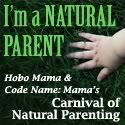 We went roller skating for her party. It was a lot of fun, but it was way too long. Most young children cannot skate for 2 hours (my niece and nephew were the exception). We made chocolate cupcakes and blue Jello cake for the party, so her friends could choose what they wanted. She used candy to "draw" a picture of herself on the cake. She said that when she blew out the candle she wished for summer to come soon.
We went roller skating for her party. It was a lot of fun, but it was way too long. Most young children cannot skate for 2 hours (my niece and nephew were the exception). We made chocolate cupcakes and blue Jello cake for the party, so her friends could choose what they wanted. She used candy to "draw" a picture of herself on the cake. She said that when she blew out the candle she wished for summer to come soon.She has finally throughly memorized every Bob the Builder episode and thus rarely requests them. However she once again enjoys Curious George even though she remembers all the episodes "from when she was two." Dora and Diego have also joined the mix, and now she is speaking Spanish to me, but I do not understand until she translates for me.
She continues to amaze me with her writing and reading skills. She enjoys writing letters to people and is constantly pestering me to spell words out for her. She really enjoys writing to her baby cousin Issac, who is so cute. She did manage to sound out his name the other day as Isic.
She and her sister continue to frustrate me with their fighting. Selena is constantly calling Allie names. Allie hits her, she hits Allie back. They don't want to share toys. They always want to snatch the toy from the other person. It is very frustrating. But then they have their moments of sweetness where one will say please and they will take turns. Or they will kiss each other's bonks. Or Selena will hold Allie's hand in parking lots (and Allie refuses to hold mine). One morning Selena woke up and made up a song about how cute Allie was. Or they play hide and seek together. It is just amazing how they go from sweet to sour and back to sweet so quickly.
Preschool is going well. It is a mystery to Floyd and I what goes on there. Every day we ask and she says she doesn't remember, but then slowly details come out over time. Today she played super hero's with a little girl, and they traded costumes when she said her cape was too long. She has identified kids who are close and play together often, but she says she just plays with whoever asks her. Her teacher tells then, "You get what you get and you don't throw a fit." Floyd asked her if they just spend all their time licking each other (because of all the sickness she brings home) and she says, "No, there is no licking at preschool." Surprised Floyd asked if this was a rule the teacher's actually specified, and she says, "No, but there's no kissing at preschool, so there isn't licking either."
Bedtimes seem to be going a bit easier. She seems to fall asleep faster which makes things much less frustrating. She comes up with the best conversations and questions at night. One night she asked me, "How does the earth spin all on its own?" I honestly have never even thought to ask such a question. She decided there must be an earth spinning machine.






















